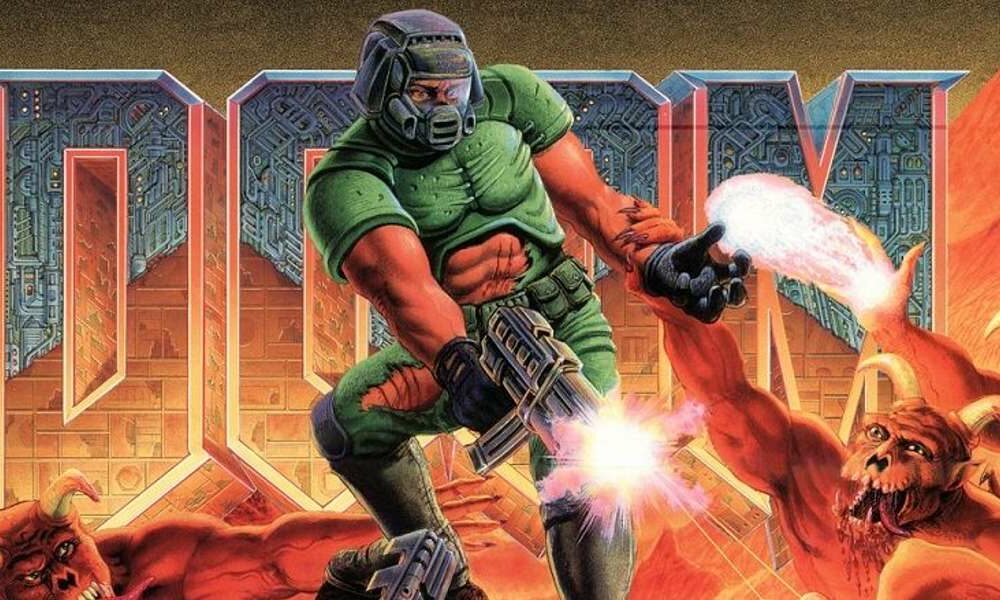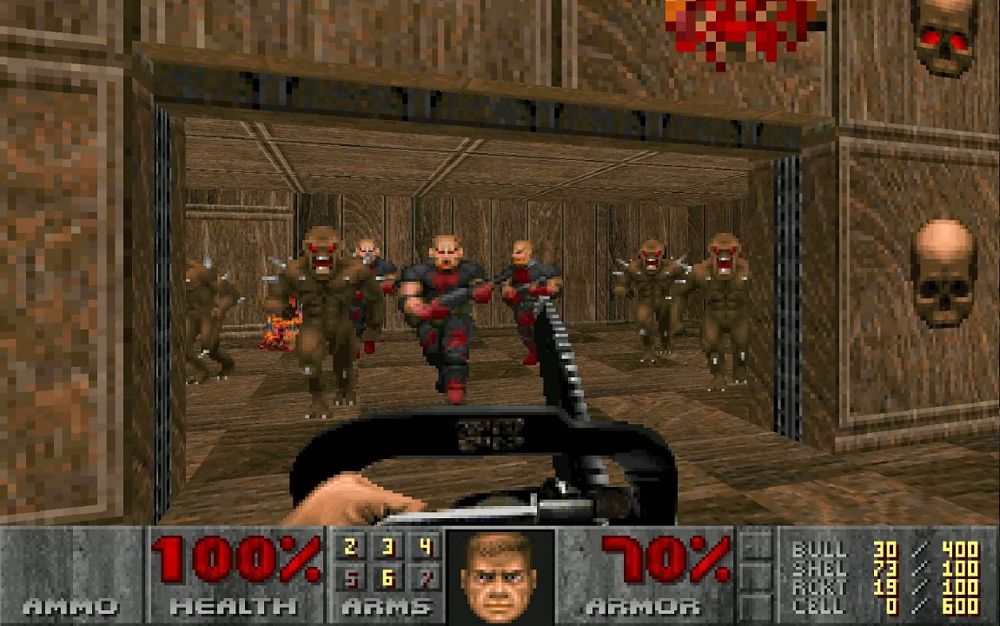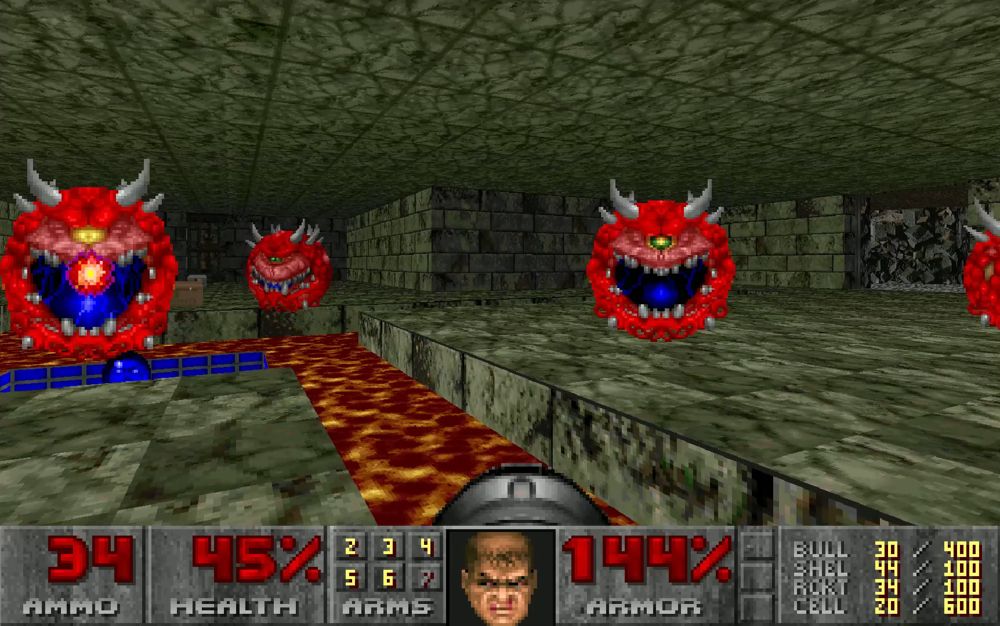
doom It is one of the most recognized brands in the video game industry. The saga, created by Id Software, gave the definitive starting signal to a genre that was previously shaped by Catacombs 3D and the first Wolfenstein: first-person shooters. Much has happened since then and the genre has evolved and mutated towards more diverse formulas, such as the more tactical approach of the mythical GoldenEye of Nintendo 64 and the more adventurous perspective of Turok 2: Seeds of Evil (a game that inadvertently laid the foundations playable from Metroid Prime).
But despite all the time that has passed and the emergence of sagas like Quake (also from Id Software), Halo, Far Cry, BioShock, Call of Duty and some lonely stars like the first Perfect Dark, the original Doom, whose first appearance was for PC in 1993is a title that has stood the test of time very well along with its sequel, released in 1995. In other words, the original Doom has become a timeless gem that almost thirty years later is still going strong.
One point that may come as a surprise is that the protagonist of Doom does not seem to formally have a name. He is usually called Doomguy, which in Spanish can be translated as “Doom’s uncle” or “Doom’s boy”. The reason for his lack of a formal name is because the intention of the developers was to give prominence to the player, however, that has not prevented him from having relatives, since he is the great-grandson of BJ Blazkowicz, the protagonist of Wolfenstein, and son of Commander Keen, whose initial name was first William J. Blazkowicz II and later Billy Blaze.
The lineage isn’t a theory. Fact. And I think you have one generation off, there.
— • 𝚝𝚑𝚊𝚝 𝚝𝚘𝚖 𝚑𝚊𝚕𝚕 • ✪ (@ThatTomHall) January 30, 2018
Clearly 1993’s Doom is a game that is outdated in many ways. At least in its default form, it doesn’t allow you to aim with the mouse, so the control system is entirely based on the keyboard.
Despite the “inconveniences” with the control system and a very outdated technical section in which a technique was used to generate a false three-dimensional environment, the direct action, coupled with the excellent level design, have made Doom a very enjoyable title even todayalthough the factor that we are going to mention below has also contributed decisively here.
Doom’s immortality lies in part in his engine
Surprised by the title of the section? If we look only at the technical aspects, this statement sounds reckless, but whoever is a fan of Doom as a technological piece will already be sensing where the shots are going to go.
The Engine source code for the first two Dooms for Linux It was published in 1997 under a proprietary license. That was modified by Id Software two years later, when it decided to relicense it to pass it on to the GPLv2, then reference license of the Free Software Foundation and the same one used by the Linux kernel. This means that the Doom engine became “hardline” free software, allowing anyone to freely copy, modify, and redistribute it. As a curiosity, in 1999 the original Quake engine was also published under the same license.
With the release of the Doom (and Quake) engine under the GPLv2 license, Id Software limited its control to the trademarks (Doom and Quake) and game levels and relinquished control over released software. That movement gave free rein so that the community could make any modification and take it even beyond its limits.

The chainsaw, one of the weapons with the most personality in Doom.
The publication of the source code, the very few resources that it requires due to the enormous technological evolution and the fact that it is written in C, a low-level programming language that is very portable between platforms, have allowed us to see Doom executed on mobile phones, ATMs, directly in BIOS, in the Touch Bar of a 2016 MacBook Pro and other devices or computers not geared towards running video games.
In addition to seeing Doom even in the most unexpected places, the publication of the source code of the engine as free software has allowed the creation of a handful of derivative projects, among which are DOSDoom, Doom Legacy, DoomGeneric and GZDoom, among many others. Spin-off projects have introduced features such as mouse pointing and support for OpenGL, Vulkan, and ray tracing. Later we will mention an interesting development based on GZDoom.
Mods, another factor that has made Doom immortal
Apart from the enormous freedoms that the GPLv2 license has granted to modify the game engine, mods have been another factor that has made the original Doom as immortal a video game as the original NES Super Mario Bros. Yes indeed, mods do not necessarily have to be free softwarebut they can recommend or require the use of a specific derivative of the engine.
When it comes to mods for the title that brought Id Software to the top, the first that usually comes to mind for players is Brutal Doom. Created in 2010, the name alone leaves very little to the imagination, and the mod is responsible for making Doom even more Doom, making it a much more visceral game. It is compatible with the sequel, GZDoom and Zandronum.
If the derivatives of the engine have focused on technical aspects and modernize the control system, the mods have served to transform Doom towards other experiences that in some cases get far away from the original proposal. Others try to bring things from later installments or other sagas like Doom 3, Age of Empires and Duke Nukem. As a curiosity, the Duke Nukem 3D engine was released at the beginning of the century and a project derived from it, EDuke32, was used to build Ion Fury.

Cacodemon, possibly Doom’s most recognizable enemy.
What is the technological limit of the original Doom engine?
Doom has established itself as a kind of technological culture that stands the test of time. Many things have been done with it especially in this century, when the community was able to get rid of the chains to be able to do what they wanted with the engine. Although as a technology it is no match for the giants that have been with us for a long time, one is surprised to see how far it has gone to break its own limits.
Since 2021 (or at least that is the year from which its existence is known) a first-person shooter called Selacowhich has some artistic inspiration from Ion Fury due to the female lead, but tries to have its own personality and distinctive aspects in terms of gameplay. For its development, GZDoom is being used, one of the most consolidated derivatives of the Doom engine at the project level and possibly one of the most evolved thanks to the fact that it supports OpenGL ES and Vulkan and incorporates the ability to point with the mouse, thus allowing the creation of games that are more adapted to current times in technical and playable terms.
If you watch a video of Selaco in motion, it’s hard to believe that it’s built on a highly evolved version of the technology we saw in the Doom released in 1993. The sheer fluidity, the items being destroyed, and the amount of detail you see in the scenarios they give the impression that it is made with another more modern engine, but no, it is a much improved version of the Doom engine that was published as free software. With no set release date, for now it will have builds for Windows and Linux.
conclusion
Doom is not only a video game that made history, but rather it is a kind of technological culture that refuses to die and has managed to become immortal. The release of its engine and mods have helped to modify the experience it offers in many ways and from different perspectives, and also the first has opened the door for independent developers to do impressive things even compared to more modern technologies. .
Whether we like it or not, we’re going to have original Doom for a while, either with more releases of the first installment of the saga, with mods or projects that are based on the technology that has been released from it.



